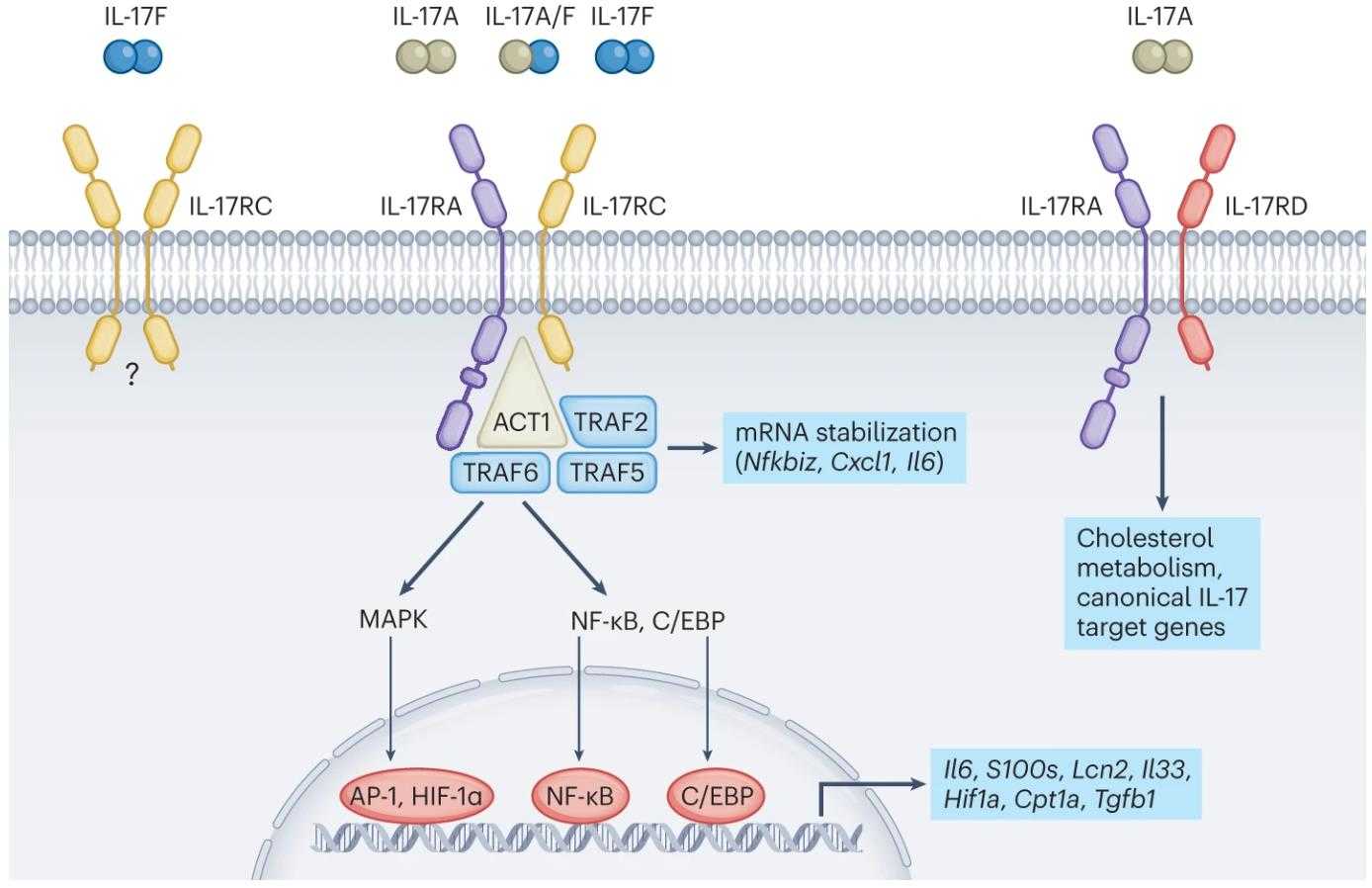Active Recombinant Canine IL17A protein(Gly26-Ala155)
| Cat.No. : | IL17A-168C |
| Product Overview : | Recombinant Canine IL17A (NP_001159350.1)(Gly26-Ala155) was expressed in E. coli with a N-terminal Met. |
- Specification
- Gene Information
- Related Products
- Case Study
- Application
- Download
| Species : | Canine |
| Source : | E.coli |
| Tag : | Non |
| Protein Length : | Gly26-Ala155 |
| Form : | Lyophilized from sterile PBS, pH 7.4. Normally 5 % - 8 % trehalose, mannitol and 0.01% Tween80 are added as protectants before lyophilization. |
| Bio-activity : | 1. Measured by its binding ability in a functional ELISA. Immobilized Canine IL17A at 10 μg/ml (100 μl/well) can bind human IL17Ra, The EC50 of human IL17Ra is 6.0-15.0 ng/ml. 2. Measured by its ability to induce IL-6 secretion by HFF human foreskin fibroblast cells. The ED50 for this effect is typically 1-5 ng/mL. |
| Molecular Mass : | The recombinant canine IL17A comprises 131 amino acids and has a predicted molecular mass of 15.2 kDa. The apparent molecular mass of the protein is approximately 15 kDa in SDS-PAGE under reducing conditions due to glycosylation. |
| Purity : | > 90 % as determined by SDS-PAGE |
| Storage : | Samples are stable for up to twelve months from date of receipt at -20°C to -80°C. Store it under sterile conditions at -20°C to -80°C. It is recommended that the protein be aliquoted for optimal storage. Avoid repeated freeze-thaw cycles. |
| Reconstitution : | It is recommended that sterile water be added to the vial to prepare a stock solution of 0.2 ug/ul. Centrifuge the vial at 4°C before opening to recover the entire contents. |
| ◆ Recombinant Proteins | ||
| IL17A&IL17F-165H | Active Recombinant Human IL17A/IL17F Protein, Biotinylated | +Inquiry |
| IL17A-868D | Recombinant Dog IL17A protein, His & T7-tagged | +Inquiry |
| IL17A-113H | Active Recombinant Human Interleukin 17A | +Inquiry |
| IL17A-570H | Active Recombinant Human Interleukin 17A, MIgG2a Fc-tagged | +Inquiry |
| IL17A-903HFL | Recombinant Full Length Human IL17A Protein, C-Flag-tagged | +Inquiry |
| ◆ Cell & Tissue Lysates | ||
| IL17A-001HCL | Recombinant Human IL17A cell lysate | +Inquiry |
Case 1: Liu S, et al. Sci Rep. 2016
IL-17A, a pro-inflammatory cytokine, is associated with autoimmune and inflammatory conditions. While monoclonal antibodies that block IL-17A signaling have shown significant effectiveness, there is still a need for an oral treatment option. Researchers identified a high-affinity IL-17A peptide antagonist (HAP) consisting of 15 amino acids through phage-display screening, followed by optimization through saturation mutagenesis and amino acid substitutions. This HAP specifically binds to IL-17A, preventing it from interacting with its receptor, IL-17RA. In tests with primary human cells, HAP effectively halted the production of various inflammatory cytokines. Crystal structure analysis showed that two HAP molecules symmetrically bind to one IL-17A dimer. The N-terminal of HAP forms a β-strand that fits between the IL-17A monomers, and the C-terminal forms an α-helix that prevents IL-17RA binding to IL-17A. This inhibition mechanism offers potential for developing peptide antagonists targeting this difficult cytokine.

Fig1. HAP inhibits SPR signaling of IL-17A binding to immobilized IL-17RA.

Fig2. Inhibition of IL-17A and IL-17RA binding by HAP measured by FRET assay.
Case 2: Andruszewski D, et al. Mol Psychiatry. 2024
Prenatal exposure to interleukin 17A (IL-17A) can lead to behavioral issues in offspring, but existing models using immunostimulants to activate maternal immunity don't pinpoint where IL-17A acts or the specific behavioral effects it induces. Researchers developed a new model, dubbed PRIMA-17, which involves transgenic overexpression of IL-17A combined with maternal receptor deficiency, allowing study of prenatal imprinting through embryo-restricted IL-17A responses. This model demonstrated transgenic IL-17A crossing the placental barrier and causing behavioral deficits in mice, including early-life communicative impairments and increased anxiety in adulthood. Thus the PRIMA-17 model as a valuable tool for investigating neurological deficits in mice.

Fig1. Duration of vocalizations.

Fig2. Representative FACS plots and histograms of microglia analysis in IL-17A-imprinted and control mice.
Recombinant canine IL-17A protein is an important pro-inflammatory cytokine that belongs to the IL-17 cytokine family. It plays a key role in the immune system, especially in promoting inflammatory responses in T cells, macrophages, and other immune cells. IL-17A plays an important role in protecting the body from bacterial and fungal infections, but excessive IL-17A activity may lead to chronic inflammation and autoimmune diseases such as psoriasis, rheumatoid arthritis, and Crohn's disease.
In the field of scientific research, the application of recombinant IL-17A protein is mainly concentrated in immunology research, which helps scientists understand the signaling pathway of IL-17, and in disease mechanism research, it is used to study the pathogenesis and potential therapeutic targets of these diseases. In addition, recombinant IL-17A protein is also used in antibody development, especially the development of anti-IL-17A antibodies, to intervene in the overactive IL-17 signaling pathway. In terms of drug development and evaluation, recombinant IL-17A protein is often used in drug screening to find small molecule drugs or other biologics that can inhibit its activity. In diagnostic development, the development of diagnostic tools through recombinant proteins helps monitor IL-17A levels and evaluate disease progression or treatment effects. In animal model studies, recombinant IL-17A protein is used to establish animal disease models, especially to study the role of IL-17A in canine diseases, which is of great significance for veterinary pharmacology and pathology research.

Fig1. IL-17A and IL-17F initiate downstream signalling events by ligating receptor complexes composed of IL-17RA and IL-17RC. (Aaron Douglas, 2023)
Not For Human Consumption!
Inquiry
- Reviews (0)
- Q&As (0)
Ask a Question for All IL17A Products
Required fields are marked with *
My Review for All IL17A Products
Required fields are marked with *



